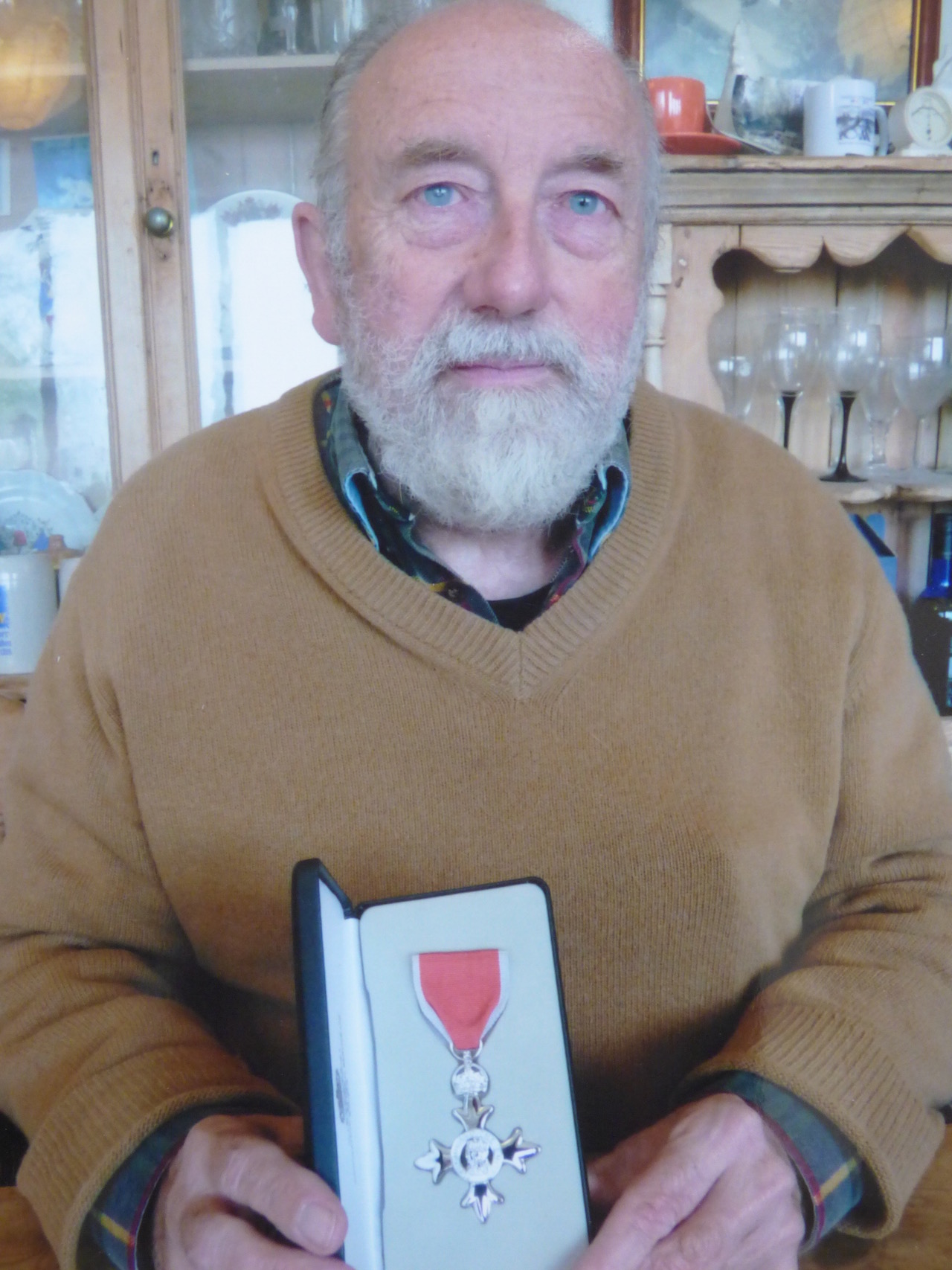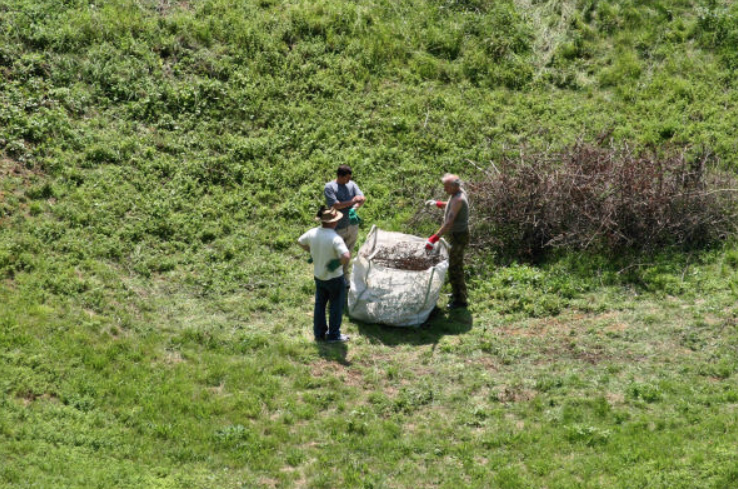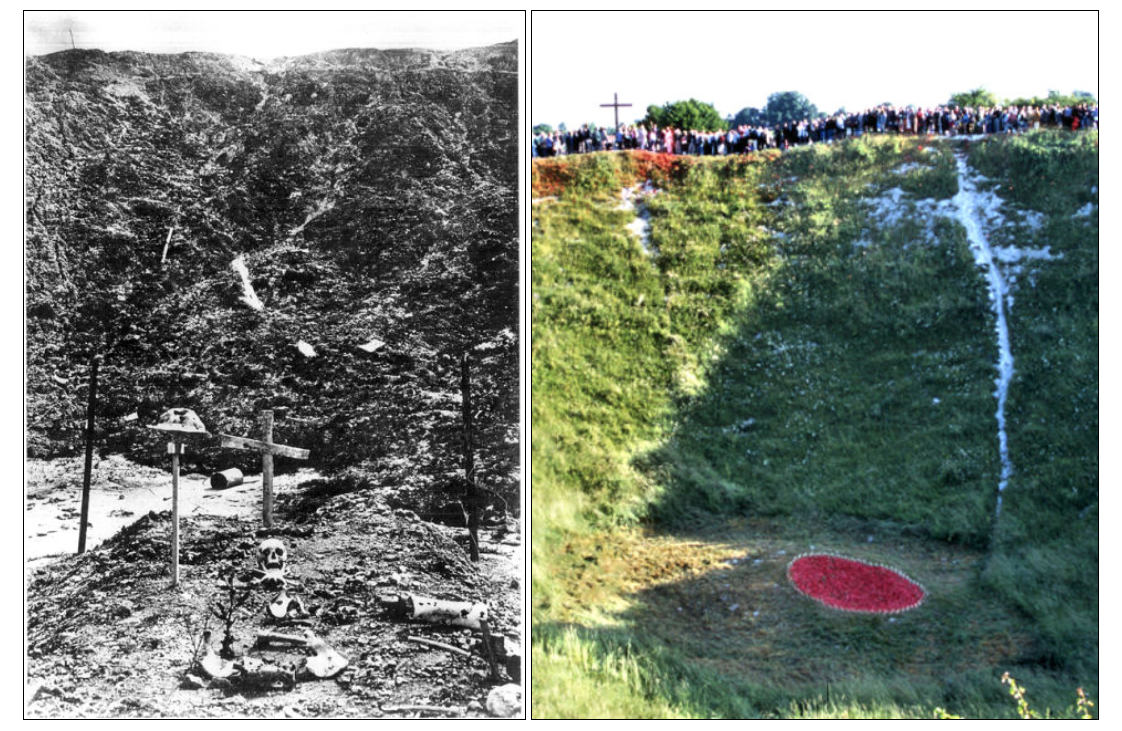 Abraham Lincoln
If given the truth, the people can be depended upon to meet any national crisis...
Abraham Lincoln
If given the truth, the people can be depended upon to meet any national crisis...
 Guildford news...
for Guildford people, brought to you by Guildford reporters - Guildford's own news service
Guildford news...
for Guildford people, brought to you by Guildford reporters - Guildford's own news service
Preserving The Largest Crater Ever Made By Man In Anger: Remembering Its War Dead
Published on: 26 Jun, 2017
Updated on: 26 Jun, 2017
It is another busy year for Richard Dunning, who owns a significant feature of the First World War Somme battlefield – the Lochnagar Crater.
Richard, who lives near Guildford, received his MBE from Prince Charles in February for his work in conserving the historic feature that was the result of a huge mine exploding on the German front line by the Allies at the start of the Battle of the Somme on July 1, 1916.
He bought the area of land in 1978, realising its great importance in the history of the Great War and as a memorial to the hundreds of soldiers who died or who were injured in and around it.
This year sees continued conservation work at the crater by volunteers, the Friends of Lochnagar, with a number of new information panels being installed ahead of the 101st anniversary of the explosion that created it.

July 1st 2010. The congregation forming a complete circle around the crater by holding hands, symbolising fellowship and reconciliation.
Image courtesy of Georges Vandenbulke © 2011. From the Lochnagar Crater website.
Speaking to The Guildford Dragon NEWS, Richard said that more than 200,000 people visit the site each year, including 90,000 children. It therefore requires a good deal of conservation and repair work on the walkway around the perimeter and to stop erosion of the soil and by burrowing rabbits, as well as cutting back vegetation.
The crater is named after a mountain in Scotland and is in the rolling chalk down land of the River Somme valley. Just over one hundred years ago it was the site of bitter fighting as Allied troops once more tried to force the German army back and to gain ground from them.
To tell the story of the crater and perhaps more importantly the stories of the men who fought and died there, 20 new information panels are being installed. They will create a labyrinth; and as visitors walk through they will learn about the men who dug tunnels into which the explosives were placed that formed it, and what it was like to be there through personal memories.
Richard said that visitors will be taken on an emotional journey of information, compassion and reconciliation.
His own passion for the crater, preserving it and using it to explain the horrors of war never falter. From when he first owned it he made contact with men who had fought there – although now of course there is no-one alive who fought in the First World War. In conjunction with the Western Front Association Richard visited many of those survivors listening to their stories. He was the Surrey branch secretary of the association for six years.
He also arranged for a number of them to revisit the crater. He said: “That was a privileged time, to stand with them on the edge of the crater and hear their tales and feelings 70 years later.”
Other features visitors to Lochnagar Crater can see are several memorials. Last year, a granite memorial to women was unveiled and this year there will be the unveiling of a memorial to the tunnellers.
Once again, Richard will be at the crater later this week, on Saturday, July 1, for a service of remembrance, marking the time at 7.28am when 101 years ago a huge explosion made the ground tremble, sending earth hundreds of feet into the air. It is expected he will be joined by many others also paying their respects to those who died and suffered there.
Recent Articles
- Guildford Institute’s Crowdfunding Project for Accessible Toilet in its New Community and Wellbeing Centre
- Letter: Guildford – Another Opportunity Missed?
- Letter: GBC’s Corporate Strategy – Where Is the Ambition?
- My Memories of John Mayall at a Ground-breaking Gig in Guildford Nearly Six Decades Ago
- Westborough HMO Plans ‘Losing the Heart of the Street’ Says Resident
- College Invests to Boost Surrey’s Economy and Close Digital Skills Gap
- Community Lottery Brings Big Wins for Local Charities
- GBC Housing Plan Promises ‘A Vibrant Urban Neighbourhood’ Near Town Centre
- Hospital Pillows ‘Shortage’ at the Royal Surrey
- Updated: Caravans Set Up Camp at Ash Manor School


Search in Site
Media Gallery
Dragon Interview: Local Artist Leaves Her Mark At One of England’s Most Historic Buildings
January 21, 2023 / No Comment / Read MoreDragon Interview: Lib Dem Planning Chair: ‘Current Policy Doesn’t Work for Local People’
January 19, 2023 / No Comment / Read MoreA3 Tunnel in Guildford ‘Necessary’ for New Homes, Says Guildford’s MP
January 10, 2023 / No Comment / Read More‘Madness’ for London Road Scheme to Go Ahead Against ‘Huge Opposition’, Says SCC Leader
January 6, 2023 / No Comment / Read MoreCouncillor’s Son Starts Campaign for More Consultation on North Street Plan
December 30, 2022 / No Comment / Read MoreCounty Council Climbs Down Over London Road Works – Further ‘Engagement’ Period Announced
December 14, 2022 / No Comment / Read MoreDragon Interview: GBC Reaction to the Government’s Expected Decision to Relax Housing Targets
December 7, 2022 / No Comment / Read MoreHow Can Our Town Centre Businesses Recover? Watch the Shop Front Debate
May 18, 2020 / No Comment / Read More












Recent Comments